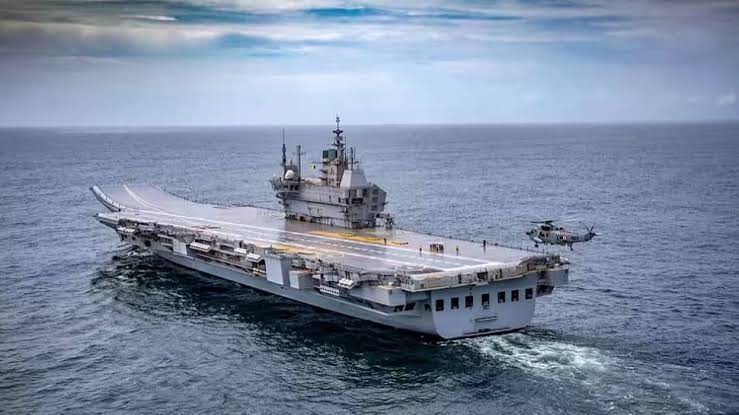In a joint press conference held on Sunday, India’s Army, Navy, and Air Force shared details about the airstrikes on nine terrorist camps in Pakistan and Pakistan-occupied Kashmir (PoK), carried out on May 7, and their subsequent actions in response to the evolving situation.
During the briefing, Vice Admiral A.N. Pramod, Director General of Naval Operations (DGNO), revealed that the Indian Navy was fully prepared on the night of May 9 to launch targeted strikes on Pakistani military installations, including Karachi Port, and other strategic assets. However, the Navy was awaiting final orders from the Indian government. He emphasized that the Indian Navy had the complete capability to execute such missions effectively.
Vice Admiral Pramod, while speaking during the briefing on Operation Sindhur, said:
“Following the cowardly attack on innocent tourists by Pakistan-sponsored terrorists in Pahalgam, Jammu & Kashmir, on April 22, the Indian Navy immediately deployed its warships, submarines, and fighter aircraft in full combat readiness at sea. Within 96 hours of the terror attack, we tested our weapons and warships in the Arabian Sea and remained fully poised for decisive action against the enemy in the Northern Arabian Sea. Our forces were strategically deployed, ready to strike pre-selected targets on both land and sea, including Karachi, at a time of our choosing.”
He further added: “The Indian Navy forced the Pakistani Navy and its aerial units into a defensive posture, mostly remaining within ports or close to the coast – all under our constant surveillance. From day one, our response has been measured, proportional, and responsible. We remain deployed at sea, fully ready to respond decisively to any hostile act from Pakistan.”
Also Read- India Ends Trade with Pakistan, Bans All Imports from Neighbouring Country
On May 7, under Operation Sindoor, the Indian Army and Air Force conducted precise airstrikes on nine terror camps located in Pakistan and PoK, eliminating over 100 terrorists linked to Jaish-e-Mohammed, Lashkar-e-Taiba, and Hizbul Mujahideen.
To recall, on April 22, Pakistan-backed terrorists had killed 26 tourists in the Baisaran Valley of Pahalgam. In response, India launched Operation Sindoor. The Indian Air Force and Army carried out coordinated air and ground strikes, destroying significant portions of the terror infrastructure in Pakistan, while the Navy remained on high alert, ready to act if needed.
Enraged by the destruction of its terror camps, Pakistan attempted to retaliate on the night of May 8 with drone and missile attacks on Indian territory, but failed. India’s air defence systems successfully intercepted and neutralized the incoming missiles and drones mid-air. Meanwhile, Pakistan’s military continued shelling and firing along the LoC and international border, targeting civilian areas.
The Indian Army and BSF gave a strong response, killing 40 Pakistani soldiers and officers in the counter-offensive. However, India also lost five brave soldiers during this period. Following vows by Prime Minister Narendra Modi and other top leaders to give a befitting reply to Pakistan’s cowardly attack, all three branches of India’s armed forces remained on full alert, ready to strike back.


